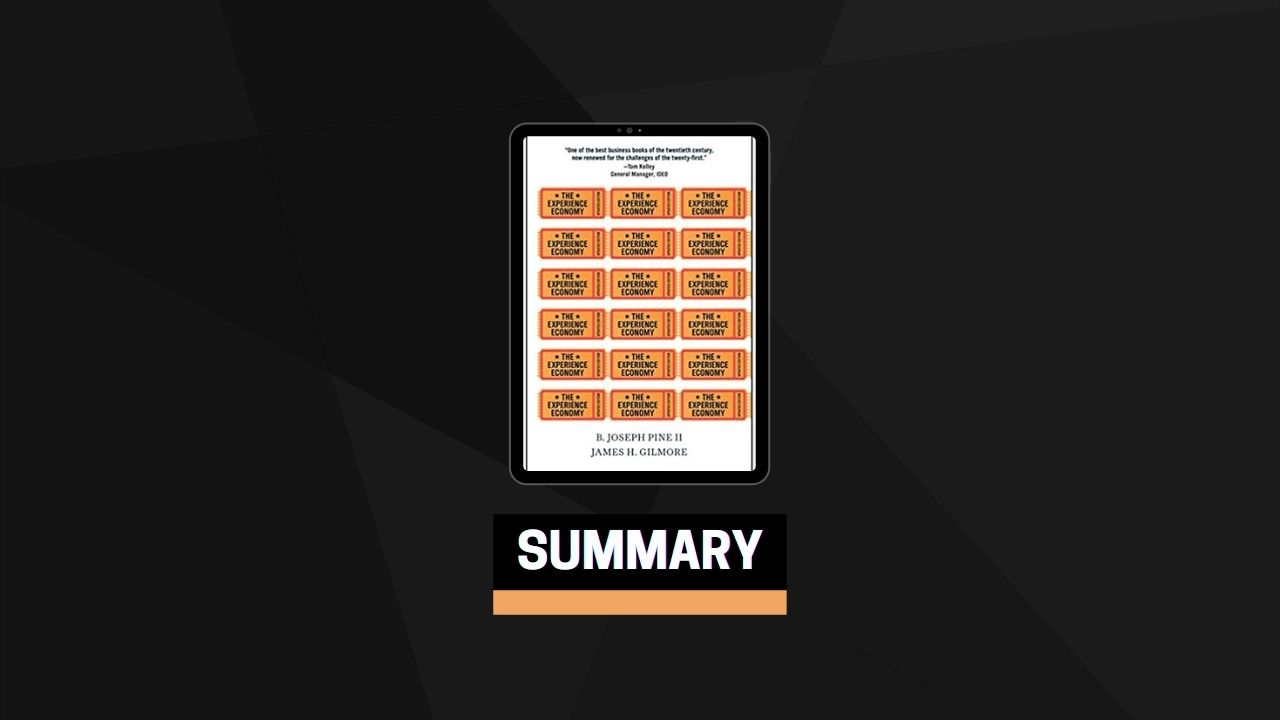Welcome to the Experience Economy
Experiences are as distinct from services as services are from goods, but one that has until now gone largely unrecognized. Experiences have always been around, but consumers, businesses, and economists lumped them into the service sector along with such uneventful activities as dry cleaning, auto repair, wholesale distribution, and telephone access. When a person buys a service, he purchases a set of intangible activities carried out on his behalf. But when he buys an experience, he pays to spend time enjoying a series of memorable events that a company stages—as in a theatrical play—to engage him in an inherently personal way.
Setting the Stage
Staging experiences is not about entertaining customers; it’s about engaging them.
An experience may engage guests on any number of dimensions. The first dimension corresponds to the level of guest participation. At one end of the spectrum lies passive participation, in which customers do not directly affect or influence the performance. Such participants include symphony goers, who experience the event purely as observers or listeners. At the other end of the spectrum lies active participation, in which customers personally affect the performance or event that yields the experience. Active participants include skiers, who participate in creating their own experience. But even people who turn out to watch a ski race are not completely passive; simply by being there, they contribute to the visual and aural event that others experience.
The second dimension of experience describes the kind of connection, or environmental relationship, that unites customers with the event or performance. At one end of this spectrum lies absorption—occupying a person’s attention by bringing the experience into the mind from a distance—and at the other end is immersion—becoming physically (or virtually) a part of the experience itself. In other words, if the experience “goes into” guests, as when watching TV, then they are absorbing the experience. If, on the other hand, guests “go into” the experience, as when playing a virtual game, then they are immersed in the experience.
The Show Must Go On
The sensory stimulants that accompany an experience should support and enhance its theme. The more effectively an experience engages the senses, the more memorable it will be. Smart shoe shine operators augment the smell of polish with crisp snaps of the cloth, scents and sounds that don’t make the shoes any shinier but do make the experience more engaging. Savvy hair stylists shampoo and apply lotions not simply for styling reasons but because they add more tactile sensations to the patron’s experience. Similarly, better grocers pipe bakery smells into the aisles, and some use sight and sound to simulate thunderstorms when misting their produce to better engage food shoppers.
Services turn into engaging experiences when layered with sensory phenomena, as can be seen in the very earliest stages of life. Consider the task of feeding an infant. One evening during dinner, then eleven-month-old Evan Gilmore pushed aside his mother’s hand, refusing the food she offered. So Daddy took over. In an act performed by countless parents before, the spoon no longer went directly from jar to mouth. Instead, it was taken two feet back and raised high in the air. With herky-jerky movements, the flying machine descended, accompanied by the sputtering motor-mouthed improvisations of Air Traffic Papa. Tightly clinched baby lips soon opened as wide as a hangar to receive a spoonful from each f light.
Believe it or not, this airplane game conveys the essence of what any dining establishment does to turn ordinary food service into a scintillating experience for paying adults: designing exactly the right sensations as cues that convey the theme for which the guests have come. With young Evan, everything fit the “flying food” theme and gave the impression that a safe landing was required. The experience stager eliminates negative cues (such as a sternly stated “Eat your food”), while tuning each positive cue (visually, aurally, tactilely, flavorfully, aromatically) to integrate the impressions into a believable and appealing theme.
Get Your Act Together
customizing a service can be a sure route to staging a positive experience. Certainly, customization is not the be-all and end-all; rather, companies should use it to create customer-unique value, the portal through which experiences reach individual customers. An economic offering confers customer-unique value, at its ideal, when it is
- Specific to individual customers: Brought into being at a particular moment for this precise customer
- Particular in its characteristics: Designed to meet this customer’s individual needs (although some other customer may have the same needs and may therefore purchase the same offering)
- Singular in its purpose to benefit this customer: Not trying to be any more or less than, but rather only and exactly, what the customer desires
When a company provides such customer-unique value, it takes an invaluable first step toward creating memorable interactions that stand apart from the routine transactions mass producers foist on their customers.
The Customer Is the Product
Every business can indeed be a stage for offering economic experiences. Whether selling to consumers or companies, firms must recognize that goods and services are no longer enough; customers now want experiences. But to what end? Experiences can offer enjoyment, knowledge, diversion, and beauty, but more than the desire for such memorable qualities drives the Experience Economy. For not all experiences are fun, enlightening, distracting, or breathtaking.
Why, for example, do people pay good money to join fitness centers, where they expect to experience physical pain? Why do they pay $200 an hour to a psychiatrist, in whose office they may re-experience mental anguish? Why do tens of thousands of men pay admission to attend an event sponsored by the Christian organization Promise Keepers, whose goal it is to change men’s behavior? And why do young managers leave well-paying jobs to spend tens of thousands of dollars on business school? There seems to be only one answer to all of these questions: to be affected by the experience.
The experiences we have affect who we are, what we can accomplish, and where we are going, and we increasingly ask companies to stage experiences that change us. Human beings have always sought out new and exciting experiences to learn and grow, develop and improve, mend and reform. But as the world progresses further into the Experience Economy, much that was previously obtained through noneconomic activity will increasingly be found in the domain of commerce. That represents a significant change. It means that to obtain what we once sought for free, we now pay a fee.
As economic activity shifts further and further away from goods and services, those companies that stage experiences alone—without considering the effect these experiences have on the participants and without designing the experiences in such a way as to create a desired change—will eventually see their experiences become commoditized. The second time you experience something, it will be marginally less enjoyable than the first time, the third time less enjoyable than that, and so on until you finally notice the experience doesn’t engage you nearly as much as it once did. Welcome to the commoditization of experiences, best exemplified by the increasingly voiced phrase “Been there, done that.”


